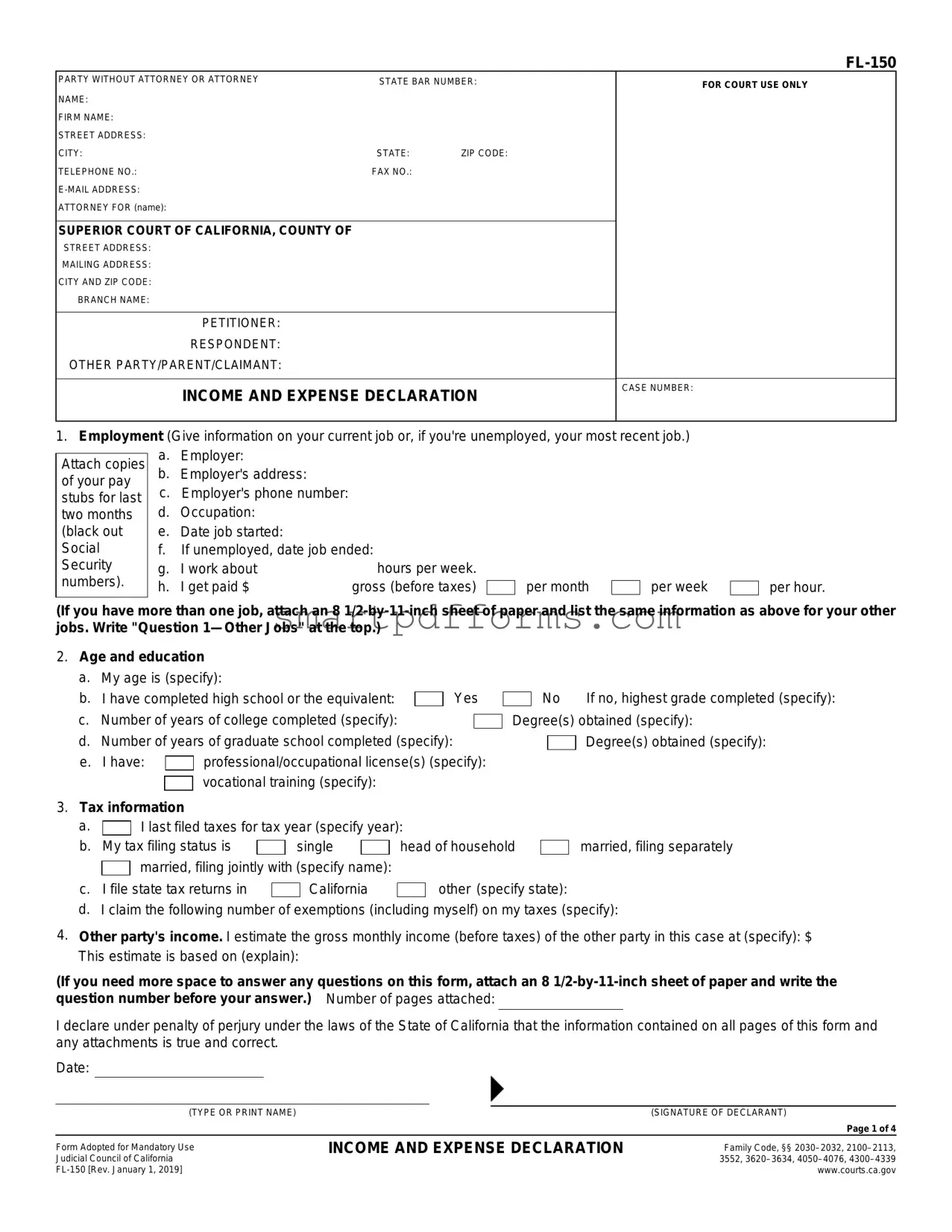Blank Fl 150 PDF Template
The FL-150 form, officially known as the Income and Expense Declaration, is a critical document used in California family court proceedings that requires individuals to provide detailed information about their financial situation. This form covers a wide range of financial data, including employment, income sources, tax information, expenses, assets, and debts. It plays a significant role in determining child support, spousal support, and other financial matters during legal separations or divorces. To accurately complete and submit your FL-150 form, click the button below for detailed instructions and guidance.
Make This Document Now



 No If no, highest grade completed
No If no, highest grade completed 




 Rent or
Rent or